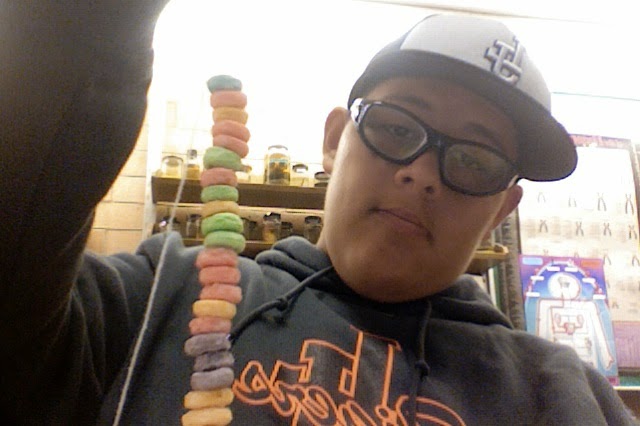My Photosynthesis Lab Report
by : Matthew Perez
Purpose:
Background Facts:
- Carbon dioxide in water produces carbonic acid.
- Bromothymol Blue (BTB) is a blue-green liquid which changes to a yellow color in acid and back to blue-green when returned to a neutral pH.
- Carbon dioxide plus water yields sugar and oxygen when chlorophyll and sunlight are present.
- Animals respire.
- Green plants photosynthesize in the light and respire all the time.
- Sugar plus oxygen yields carbon dioxide plus water and energy.
Materials:
five to six beakers or test tubes
Water
Bromothymol Blue (BTB)
three snails
two to three elodea plant
Procedure:- first fill 1 beaker with 20 to 50 ml's of water
- next put 5 to 6 drops of the BTB solution in the water
- then repeat steps one and two for the other five beakers
- now with one of your beakers you will put one of your snails in it
- with one of your beakers put on of your elodea plants in it and put it in a well lit area
- now with your second elodea plant put it in your water solution with one of your snails and put it in a dark area for three hours
Observations:
- Water plus bromothymol blue is blue-green.
- Water plus bromothymol blue plus an aquarium snail turns yellow.
- Water plus bromothymol blue plus Elodea (an aquarium plant) is blue-green in light.
- Water plus bromothymol blue plus a snail plus Elodea is blue-green in light and yellow when left in the dark for three hours.
Analysis and Conclusions:
- Water plus bromothymol blue is blue-green because the bromothymol is a blue-green substance.
- Water plus bromothymol blue plus an aquarium snail turns yellow because the snail is a animal and animals respire.
- Water plus bromothymol blue plus Elodea (an aquarium plant) is blue-green in light because sugar plus oxygen yields carbon dioxide plus water and energy.
- Water plus bromothymol blue plus a snail plus Elodea is blue-green in light and yellow when left in the dark for three hours because green plants photosynthesize in the light and respire all the time so dose the snail. when in the dark the plant dose not respire witch making the solution turn blue green again.


